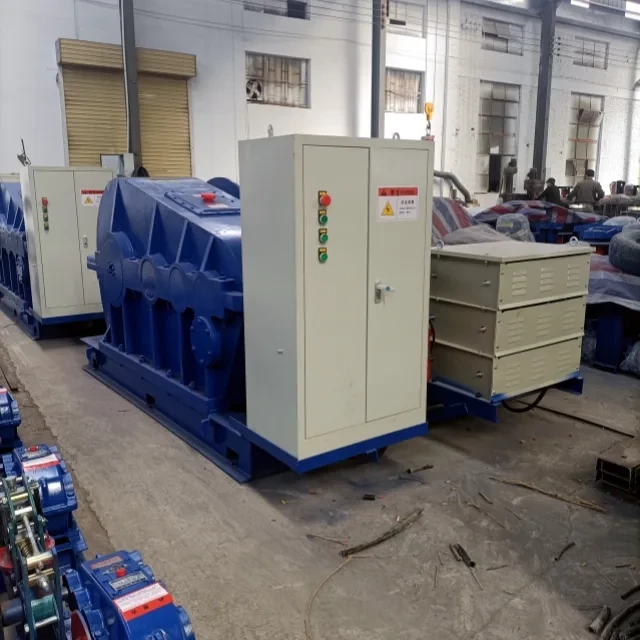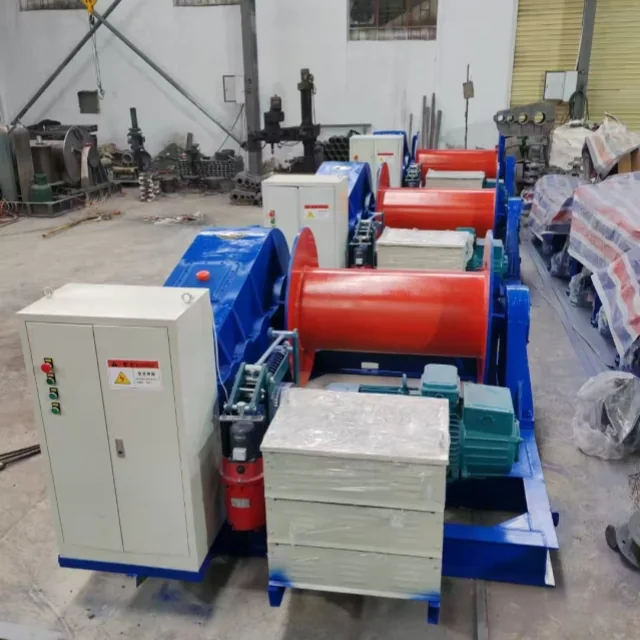Modern construction projects demand vertical transport solutions that balance speed with uncompromised safety. Quick winch systems serve as the backbone for material and equipment lifting across high-rise sites, bridge maintenance, and industrial installations—but only when properly configured. This guide breaks down the engineering principles behind reliable winch operations, benchmarked performance across project types, and compliance strategies for aging systems.
Core Components of a Construction-Grade Quick Winch System
Gantry Structures: Stability Under Dynamic Loads
A winch system’s gantry acts as its skeletal framework, bearing both static weights and sudden force variations. Engineers prioritize:
- Triangulated steel supports to resist lateral sway during lifting
- Modular assembly designs allowing on-site adaptability for uneven terrain
- Vibration-dampening joints that absorb shock from abrupt stops
Ever wondered how a winch gantry withstands 10-ton loads swinging in high winds? The secret lies in its dynamic load calculations—factoring in not just weight, but momentum and environmental stressors.
Well Frame Engineering for Hazard Mitigation
The well frame (or shaft enclosure) prevents load collisions with adjacent structures. Critical features include:
- Guiderail alignment systems keeping loads centered during ascent/descent
- Collapsible impact buffers at entry/exit points to protect materials
- Emergency brake triggers activated by frame contact
Pulley Block Dynamics and Load Optimization
Pulley configurations determine a winch’s lifting efficiency. Multi-sheave blocks:
- Reduce cable wear by distributing friction across multiple grooves
- Enable variable speed control through gear ratio adjustments
- Incorporate load-limiting sensors to prevent over-torque failures
Performance Benchmarking Across Project Types
High-Rise Construction: Speed vs. Safety Tradeoffs
Skyscraper projects require winches capable of rapid cycles without sacrificing precision. Data from urban high-rise sites shows:
- Optimal line speeds between 0.5-0.8 m/s minimize pendulum effects
- Dual-drum winches allow simultaneous concrete formwork and rebar transport
- Auto-leveling hooks compensate for building sway at extreme heights
Think of a winch system as a construction elevator—its reliability directly impacts how many floors crews can complete per week.
Bridge Maintenance: Compact Configurations for Limited Spaces
Underbridge winches demand:
- Low-profile gantries fitting within narrow catwalks
- Explosion-proof motors for corrosive marine environments
- Remote-controlled operation when visibility is obstructed
Enhancing System Longevity and Compliance
ISO Safety Standards for Winch Component Interoperability
Modern ISO 4309 and ASME B30.7 standards enforce:
- Standardized load charts for mixed-component systems
- Fail-safe mechanisms like redundant braking systems
- Corrosion resistance testing for coastal or chemical exposure
Retrofitting Legacy Systems with Smart Load Sensors
Older winches gain new capabilities through:
- Wireless load cells replacing analog gauges
- Predictive maintenance alerts based on motor current fluctuations
- Anti-two-block systems preventing hook-collision accidents
Conclusion: Building Vertical Efficiency from the Ground Up
Quick winch systems exemplify mechanical synergy—where gantry stability, smart pulley physics, and adaptive configurations converge to lift construction productivity. For project managers, prioritizing:
- Component interoperability during system design
- Environment-specific calibrations (e.g., wind loads at height)
- Proactive sensor upgrades for aging equipment
ensures vertical transport remains both swift and incident-free. Brands like Garlway integrate these principles into robust winch solutions tailored for evolving job site demands.
Next time you see materials ascending smoothly on a construction site, remember—it’s not just a winch at work, but a meticulously balanced lift ecosystem.
Related Products
- Electric and Hydraulic Winch for Heavy Duty Applications
- Small Electric Winch 120V and 240V for Compact Applications
- Ready Mixer Machine for Construction Ready Mix Machinery
- Skid Steer Self Loading Concrete Mixers for Construction
- Warn Winch Windlass Boat Trailer Winch
Related Articles
- How to Choose the Right Winch for Heavy-Duty Applications: A Scenario-Based Guide
- How Electric Winch Components Dictate Performance and Durability
- How Winch Certification Shields Your Business from Legal and Operational Risks
- How Winch Design Powers Reliability and Adaptability in Demanding Environments
- How Electric Winches’ Engineering Enhances Efficiency and Safety in Heavy-Duty Applications










